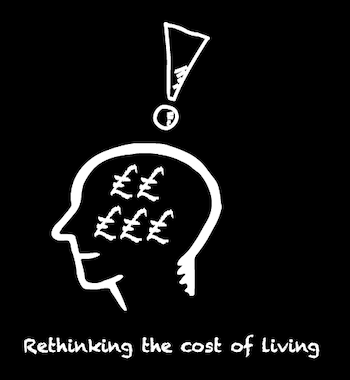What caught my eye this week.
The Litquidity video below is in horribly bad taste. I believe the Normandy landing scene in Saving Private Ryan is a truth-bomb for humanity. Every Twitter keyboard warrior should watch it a dozen times before venturing more views on Ukraine, Russia, and NATO.
On the other hand even my saintly co-blogger The Accumulator found it funny.
And as the ‘boomer PM’ you’ll spot 59 seconds in, I found it cathartic:
(Follow those links to watch the video if you can’t see it embedded here.)
Talking of The Accumulator, he’s been even more of a rubbish trench buddy than usual in 2022.
Don’t get me wrong, he’s exactly the sort of comrade-in-arms you should really want.
The Accumulator ignores the market. Doesn’t sell. Barely knows whether shares are trading today.
But for an active investing junkie like me, his ignorance of the gyrations can be infuriating.
The Accumulator hasn’t even been spooked by his starting FIRE a year ago.
Sequence of returns risk might as well be a 1970s prog rock band for all he cares.
Pump up the volume
Besides his eternally doughty disinterest in short-term market movements, the other reason for The Accumulator’s stoicism is probably that he’s a British investor.
Because one thing missing from Litquidity’s meme-fest video is the weakness of the pound.
More than 60% of a global tracker is in US assets. So UK investors have been cushioned from some of the slide that kicked off six months ago – even if their portfolios are free of home bias.
Here’s a chart crime graph plotting USD/GBP against UK and US flavours of Vanguard’s global tracker fund (as of my writing this on Thursday afternoon):

As you can see, UK investors in Vanguard’s All-World tracker (yellow) have been superficially spared much of the pain, thanks to sterling’s fall.
I say ‘superficially spared’ because our spending power really has shrunk – compared to our American cousins – over the period. We’re poorer on the global stage.
The cost of living crisis will be made worse by our weaker currency.
But I’d still take superficially over definitely any day.
Always on my mind
Where I do see many Monevator readers getting angst-y is with their bond portfolios.
UK government bonds are sterling-based, obviously. No cushioning here as yields have risen with higher inflation and rate expectations.
Further, investment grade and higher-yield bonds losses have lately been compounded by recession worries. (An economic downturn is bad news for indebted companies.)
Below we can see how bonds have sold off this year:

Prior to a sharp bounce this week, the picture was even worse. And people really hate seeing their bonds go down. Much more so than stocks.
Understandable. For years no long-term investor has bought bonds expecting much in the way of a return (even though that’s actually what they got, at least until recently).
Rather, bonds were for buoyancy in the bad times. Yet now they’ve been taking on water – just when we’d want them to float.
Unfortunately this was pretty inevitable.
Global yields hit multi-century lows after the financial crisis. Sooner or later they were likely to rise.
The snag was everyone who ever said ‘sooner’ was wrong – up until the past six months. Now we have to pay the piper.
Worse, the same issues roiling the bond market are also what’s pulling at least some of the strings of the stock market. Hence shares and bonds falling together.
The good news is lower bond prices mean higher yields, and hence higher future returns.
That’s little comfort if you already own a bunch down big. But the declines are starting to make government bonds half-attractive again, and reinvesting your bond income will help eventually.
All presuming, of course, that central banks get inflation back under control.
You win again
Anyway if your biggest problem in 2022 is that your bond fund has fallen, pat yourself on the back.
It suggests you’ve probably been doing everything right.
Because nearly everything riskier you could have bought has gone down – bar some value, commodity, and energy plays.
The video above wasn’t exaggerating.
Please note: nobody need hurry to the comments to tell me I’m overreacting and everything is calm in their mill pond.
If you’re a passive investor feeling unruffled, I get it. That’s the whole counterpoint to this article!
In contrast every active investor I know – including the UK-based ones who invariably fish in the mid and small cap arena – has been dragged through a hedge backwards.
(Important exception being the faultless Monevator house troll who will tell us in the comments he sold everything and put it all into shares of BP on 3 January and who can doubt him?)
For most of 2020, picking stocks was like shooting fish in a barrel.
In 2022 it’s been like being the barrel.
It’s a sin
The sell-off began with the raciest growth stocks, as I flagged up in December. Even the best of these have continued to fall.
Many of the highest-fliers are now priced below where they started 2020 – despite having doubled or tripled their revenues over the past couple of years.
Winning the pandemic turned out to be a curse:

Source: AWOCS
More recently the tech behemoths were pulled into the vortex. Apple, Amazon, Google and Facebook – the engines of global markets for a decade – are down around 20-30% or more.
Cryptocurrencies have been hit for six. A leading (so-called) ‘stablecoin’ came apart, evaporating billions. (See the links in Crypt-o-Crypto below).
As for the frothiest shares – almost anything floated via a ‘SPAC’ in the mania of 2021 – it’s becoming a case of “dude where’s my decimal point?”
Falls of 80-90% are widespread.
The blue chip Nasdaq 100 was down nearly 30% by the worst of the midweek sell-off. The US S&P 500 was only a few tenths of a percent from the definition of a bear market, at least until stocks bounced on Friday.
Unusually though, UK large caps have held firm.
The FTSE 100 comprises long-despised value dinosaurs. Having survived the growth investing meteor strike – for now – they’re finally having their moment.
Stand by me
As the self-styled Tom Hanks wannabe on this metaphorical battlefield, I’d love to say I saw all this coming and I dodged all the pain.
Unfortunately like him I’m here getting shot up too.
By luck or judgement I got some things right. I saw the big and little clouds in 2021. I later sensed regime change and took fairly decisive action (not least with an eye on my interest-only mortgage.)
But as usual I also started buying apparent bargains too early.
Some of the cheap growth stocks I picked up in what I thought were the Christmas sales have since been cut in half or worse.
I almost always buy too soon. But I usually also buy ‘too good’ – I invest in higher-quality defensive companies at the bottom of bear markets.
In time they bounce, but they are far outpaced as the riskiest firms left for dead rise like a phoenix.
It’s hard to avoid fighting the last war as an investor.
So this time I deliberately looked to buy back into fallen angels like Shopify and PayPal and Square, after what seemed like decent declines.
Yet they just kept spiraling down.
Never gonna give you up
I blame the autocrats.
In late 2021 I expected inflation to have peaked by now. But China and Russia threw a spanner into that forecast, albeit in different ways.
Hence the bottom was just a trapdoor.
Is there further to go?
If we see a recession without an easing of inflation and rate expectations, then who knows when the wider market will stabilise.
Plenty of cyclical and value stocks that have done well could suffer in a stagflationary environment. The last prop would be kicked away from the indices.
That said, I’d like to believe we’re closer to the end than the beginning, at least for the better growth firms. Perhaps I’ll do a naughty active investing post about it. (Bring on our membership area so I don’t have to worry about inflicting such views on sensible passive investors!)
But wherever we go from here, we knew the pandemic market party had to end.
And end it has – with a bang.
The most important thing is to keep pushing on. Just keep buying, as the man said.
Long-term sensible investing is nearly-always rewarded eventually, whether you do it passively or via a coherent active strategy.
Short-term meme stock pump-and-dump traders can win for a while. But eventually most pay for their ride.
Indeed a lot of newer investors are getting off the rollercoaster feeling a bit sick and wondering where they lost their wallets.
I hope they’re not put off investing for life.
As I said the other week, I also wonder when all this will reach the real economy.
We’ve seen a hint with rate rises and the cost of living squeeze.
I suspect central banks have been talking especially tough because they want to scare the markets into tightening conditions for them, to try to avoid excessive real-world pain. Jawboning up tighter market conditions may reduce the direct discipline they need to mete out via actual rate rises, or even forcing a recession to choke off demand. (Not that the latter will help with borked supply chains.)
But usually something big blows up in the real-world anyway.
We’ll see. Enjoy the weekend!
p.s. Alas we didn’t win in the British Bank Awards, although apparently it was close. However the organizers were kind enough to send me some of the comments (without names) you submitted in support of your votes. And they made our week! Far better than any prize to hear such generous reviews of Monevator and its impact on your life. Thanks so much to everyone who took the time.
[continue reading…]




